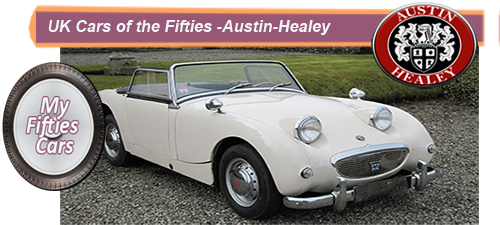
 When aged just 18, Healey, having had enough of building Sopwith Camels, decided he wanted to fly them, volunteering for the Royal Flying Corps- earning his "wings" in 1916.
When aged just 18, Healey, having had enough of building Sopwith Camels, decided he wanted to fly them, volunteering for the Royal Flying Corps- earning his "wings" in 1916.
Thankfully Healey returned from the fray unscathed to continue his engineering studies. His love for cars soon began to take prominence, which he displayed by opening a small workshop to service the growing number of vehicles that were appearing on UK roads.
At the same time, Donald continued to pursue his love for speed by taking part in rally competitions, first throughout the UK and later across Europe. Undoubtedly, Donald Healey's major breakthrough came in 1931 when he was the outright winner of the Monte Carlo rally driving a 4.5 litre Invicta.
Undoubtedly, Donald Healey's major breakthrough came in 1931 when he was the outright winner of the Monte Carlo rally driving a 4.5 litre Invicta.
 This famous victory was the first of a few in a rallying career that helped to gain Healey a reputation as a man who knew how to handle a car and how to build them.
This famous victory was the first of a few in a rallying career that helped to gain Healey a reputation as a man who knew how to handle a car and how to build them.
![]()
In 1933 Healey was persuaded to join the Triumph Motor Company in Coventry, rising rapidly through the ranks to become their technical director.
 Healey remained at Triumph for more than a decade, only leaving in 1946 to set up his own modest manufacturing concern - in a small factory in Warwick in the Midlands of England, at that time the hotbed of the UK motor industry.
Healey remained at Triumph for more than a decade, only leaving in 1946 to set up his own modest manufacturing concern - in a small factory in Warwick in the Midlands of England, at that time the hotbed of the UK motor industry.
With experience gained building cars that were both lightweight and very fast, Healey introduced two models in the late Forties models that would set the standard for his later design philosophy.
The first was the Elliott, the only sports saloon that Healey would ever put his name. The Elliott sat on a cruciform-braced box-section chassis, primarily formed of timber struts with its body made in very light steel.
 Powered by a Riley 2443cc OHV four-cylinder engine matched to a four-speed manual gearbox, the Elliott saloon was an extremely fast car, indeed recognised for some time as the World's fastest four-seater production car, capable of hitting over one hundred miles an hour.
Powered by a Riley 2443cc OHV four-cylinder engine matched to a four-speed manual gearbox, the Elliott saloon was an extremely fast car, indeed recognised for some time as the World's fastest four-seater production car, capable of hitting over one hundred miles an hour.
 In production for just five years, the Healey Elliott became a common sight on the competition circuit in the UK and mainland Europe in the late Forties and early Fifties.
In production for just five years, the Healey Elliott became a common sight on the competition circuit in the UK and mainland Europe in the late Forties and early Fifties.
The second Healy model was, of course, a soft top- the Westwood. The Westwood bore a powerful resemblance to the Elliott and was even faster, reportedly capable of reaching 106 mph (170 kph).
![]()
 Despite the critical success of these two models, the best seller and most widely known of the early Healeys was the Silverstone, a two-seater, which sold more than a hundred models, a considerable feat for the young designer and engineer.
Despite the critical success of these two models, the best seller and most widely known of the early Healeys was the Silverstone, a two-seater, which sold more than a hundred models, a considerable feat for the young designer and engineer.
In 1951 Healey, by that time, working with his son Geoffrey, participated in a tender competition sponsored by BMC, to attract aspiring designers to produce cars using parts supplied by the car manufacturing giant.
 For the next 17 years Healey was responsible for the bulk of the engineering development work on the Austin-Healey, although except for the specialised 100S types, all the cars were built by BMC, at Longbridge until 1957 when production was shifted to the MG factory at Abingdon.
For the next 17 years Healey was responsible for the bulk of the engineering development work on the Austin-Healey, although except for the specialised 100S types, all the cars were built by BMC, at Longbridge until 1957 when production was shifted to the MG factory at Abingdon.
Over the years the layout of the original 100 evolved steadily.
The longer wheelbase, six-cylinder 100-6 arrived in 1956, the larger-engined Austin Healey 3000 in 1959, and the much-modified Mk III in 1964.
Take me back to the home page


